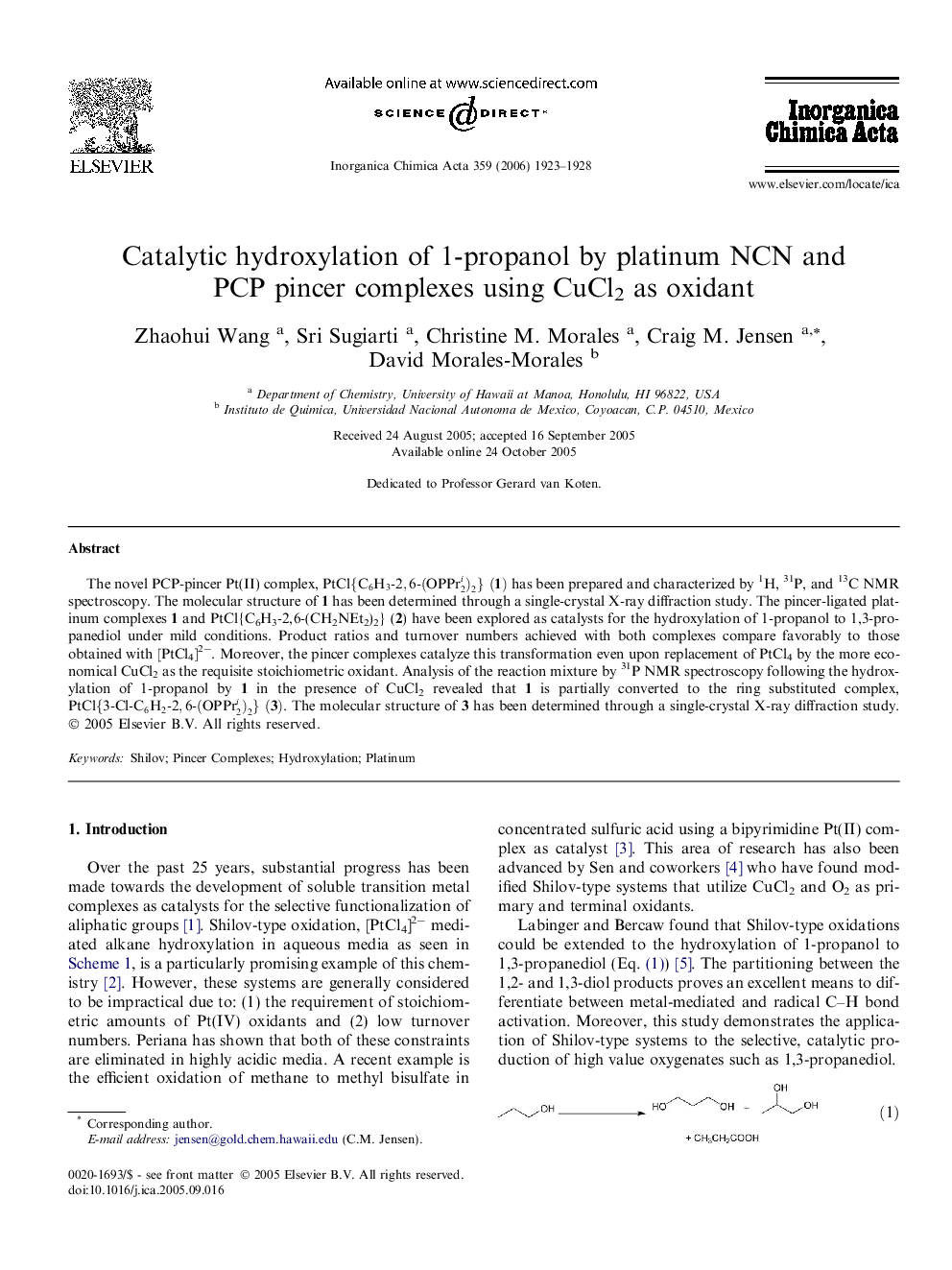| Article ID | Journal | Published Year | Pages | File Type |
|---|---|---|---|---|
| 1307814 | Inorganica Chimica Acta | 2006 | 6 Pages |
The novel PCP-pincer Pt(II) complex, PtCl{C6H3-2,6-(OPPr2i)2}(1) has been prepared and characterized by 1H, 31P, and 13C NMR spectroscopy. The molecular structure of 1 has been determined through a single-crystal X-ray diffraction study. The pincer-ligated platinum complexes 1 and PtCl{C6H3-2,6-(CH2NEt2)2} (2) have been explored as catalysts for the hydroxylation of 1-propanol to 1,3-propanediol under mild conditions. Product ratios and turnover numbers achieved with both complexes compare favorably to those obtained with [PtCl4]2−. Moreover, the pincer complexes catalyze this transformation even upon replacement of PtCl4 by the more economical CuCl2 as the requisite stoichiometric oxidant. Analysis of the reaction mixture by 31P NMR spectroscopy following the hydroxylation of 1-propanol by 1 in the presence of CuCl2 revealed that 1 is partially converted to the ring substituted complex, PtCl{3-Cl-C6H2-2,6-(OPPr2i)2}(3). The molecular structure of 3 has been determined through a single-crystal X-ray diffraction study.
Graphical abstractThe novel PCP-pincer Pt(II) complex, PtCl{C6H3-2,6-(OPPr2i)2}(1) has been prepared and characterized by 1H, 31P, and 13C NMR spectroscopy. The molecular structure of 1 has been determined through a single-crystal X-ray diffraction study. The pincer-ligated platinum complexes 1 and PtCl{C6H3-2,6-(CH2NEt2)2} (2) have been explored as catalysts for the hydroxylation of 1-propanol to 1,3-propanediol under mild conditions.Figure optionsDownload full-size imageDownload as PowerPoint slide
